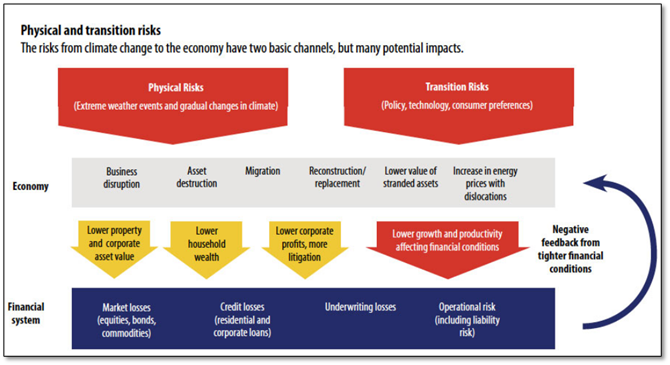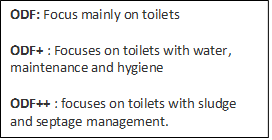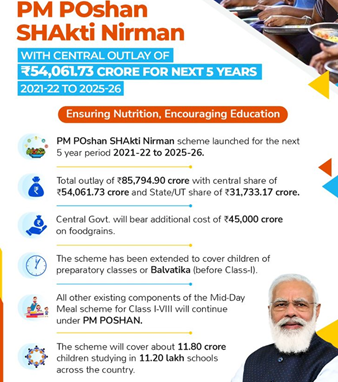Monday, 4th October 2021
Pandora Papers
In News
The Pandora papers are the latest leak of offshore financial records exposing tax haven secrecy.
About the News
- Largest data: Pandora Papers have as many as 12 million documents from 14 companies in offshore tax havens with details of ownership of 29,000 offshore companies and Trusts.
- There are at least 380 persons of Indian nationality in the Pandora Papers.

- Beyond the secret tax jurisdiction: Shell companies and private trusts are from not just obscure tax jurisdictions but also countries such as Singapore, New Zealand, and the United States.
- Reveals the actual owners: These documents relate to the ultimate ownership of assets placed in private offshore trusts and the investments including cash, shareholding, and real estate properties
What do the Pandora Papers reveal about Tax Evasion?
- New Normalcy and new ways: After regulators have cracked down on global money flows post the Panama and Paradise Papers, these papers reveal how it's a new normal among business entities as they found new ingenious ways to bypass the scrutiny.
- Illegal Activities: Complex multi-layered trust structures for estate planning makes it difficult to distinguish the money flow associated with money laundering, terrorism funding, and tax evasion from the genuine flows.
- Tax Planning vs Tax Evasion: Difficult to differentiate between legitimate and illegitimate reasons, as there are legitimate reasons for setting up trusts.
- Trusts are then misused as a secret vehicle to evade taxes, protect wealth from law enforcers, insulate it from creditors to whom huge moneys are due
Why are trusts set overseas?
- Enhanced Secrecy: Offshore trusts offer enhanced secrecy to businesspersons, given their complex structures and stringent privacy laws in the jurisdiction they operate in.
- Maintain a degree of separation: Businesspersons set up private offshore trusts to project a degree of separation from their personal assets.
- Avoid tax in the guise of planning: Businesspersons avoid their NRI children being taxed on income from their assets by transferring all the assets to a trust. The beneficiary (Children) is not liable to any tax on income from the trust.
- Flexibility in a capital-controlled economy: Under FEMA, NRIs can remit $1 million a year in addition to their current annual income, outside India. This is more than $250,000 a year under the Reserve Bank of India’s Liberalized Remittance Scheme (LRS).
- Lower Tax Rates: The tax rates in overseas jurisdictions are much lower than the 30% personal I-T rate in India plus surcharges, including those on the super-rich (those with annual income over Rs 1 crore).
Sources:
Regulatory Sandbox
In News
The Reserve Bank of India (RBI) on Friday announced the opening of a third cohort under the Regulatory Sandbox (RS) with MSME Lending as its theme.
About the News
- Application Submission: The window for submission of applications for the cohort shall be open until November 14.
- Expected Benefits: A cohort on MSME Lending is expected to spur innovations that can fill the lending gap for MSMEs through the innovative use of technology and data analytics.
- Need for this theme: The MSME segment has emerged as the growth engine of Indian economy contributing significantly to the economic and social development of the country by fostering entrepreneurship and generating large employment opportunities through business innovations
What is Regulatory Sandbox(RS)?
- Meaning: Regulatory sandbox refers to live testing of new products or services in a controlled/regulatory environment for which regulators may or may not pertain certain regulatory relaxations.
- To encourage innovations RBI had rolled out regulatory sandbox framework on August 13, 2019.
- Benefits: The sandbox allows regulator, innovator, financial services providers and customers to conduct field tests to collect evidence on benefits and risks of new financial innovations while carefully monitoring and containing risks.
- RS Cohorts: The RBI Sandbox is based on thematic cohorts. In the first cohort with retail payments as its theme, six entities have successfully exited the Sandbox. These entities have developed a range of products like feature phone-based offline payments using voice, innovative use of Near Field Communication (NFC) in payments, voice-based UPI payment solution and offline payment solution using SIM overlay smartcard.
- In the second cohort on Cross Border Payments, eight entities have been selected for testing. The products include Blockchain-based cross-border payment system, cross-border platform to facilitates the purchase of assets listed on foreign exchanges and aggregation platform of cross-border payment providers.
- Eligibility Norms: On December 16, 2020, the RBI had eased the eligibility norms for applications under sandbox. It has been modified by reducing net worth requirement from the existing ₹25 lakh to ₹10 lakh, as also including Partnership firms and Limited Liability Partnership (LLPs) to participate in the RS.
Sources:
Resumption of Offline Classes
In News
Experts and professionals have opined that schools are not super-spreaders of the Covid-19 virus.
About the News
- Government Dilemma: When it comes to children governments have been in a dilemma. Example, the Delhi government has invoked parental consent for classes IXth to XIIth, which are the only ones to have opened for practical and project work.
- Parent’s concerns: With regard to reopening of schools, doubts begin to assail parents who are concerned about their children being vulnerable to Covid-19, since they are not vaccinated.
Status of Student Attendance
- Attendance Issues: As per the Annual Status of Education Report (ASER) 2020, only 11% of all the students enrolled in both government and private schools were found to be attending online classes while 21.5% were using recorded video classes.
- Digital Divide: The National Statistical Organization (NSO) which highlighted the stark digital divide noted that the capital had the highest internet access which was just 55%.
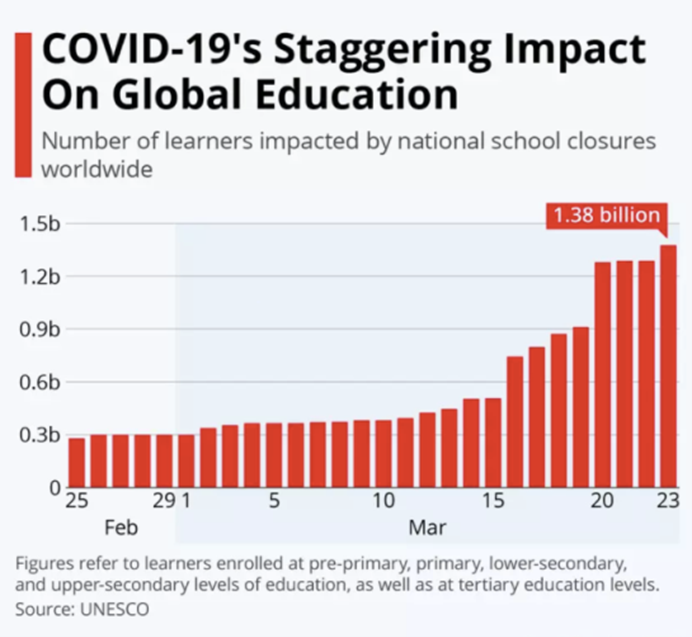
Need for Resumption of Offline Classes
- Learning Gaps: If schools do not reopen now, it will be too late to bridge the learning gap which has been prevalent for almost 18 months now.
- Digital Divide: With schools reopening, children studying under the EWS quota will not face the issue of incomplete access to digital infrastructure.
- Emotional and Social Wellbeing: Children missing offline schooling are inevitably losing valuable time at a critical period in their lives with their emotional, mental and educational development at stake.
- Opinion and View building: During the online classes, students were unable to voice their opinion or raise their doubts and not being in direct contact with the teacher proved to be disadvantageous in many ways.
Ways to increase/promote enrollment
- Holding Orientation Programmes: Schools must hold orientation programmes for the parents to build their confidence so that they will be convinced to send their wards to school trusting the clean and safe environment.
- Organized Scheduling: The schedule for different classes should be devised in such a way that each batch of children in a class comes to school twice a week. This will increase the enrollment of junior school students.
- Repairing the Damage: Once the students are back, the teachers must help them to revive their confidence and spiral back from where many of them are in terms of their ability to learn.
- Engaging Activities: Challenging tasks and engaging activities when done in small groups will boost their morale and draw them towards learning.
Sources:
- Why teachers, doctors want kids to go to school
- Delhi: Baby steps to reopen schools too little, must hurry say experts
Image Source:
This Day in History - World Animal Day
On October 4, World Animal Day is celebrated every year in honour of Francis of Assisi, the patron saint of animals. This international day of action falls on the feast day of Francis of Assisi. This international event is aimed at ensuring better standards for animal welfare and raising awareness about their importance in nature. The theme of this year is Forests and Livelihoods: Sustaining People and Planet.”

Sources:
Image of the Day - Largest khadi national flag
This is image of the 1,000 kg handwoven khadi tricolour which was unfurled atop a high mountain overlooking the Leh valley recently, to commemorate Gandhi Jayanti and the 75th anniversary of India's Independence. The flag which was unfurled is the largest handwoven and handspun cotton khadi flag ever manufactured in India and it measures 225 feet by 150 feet and weighs 1000 kg.
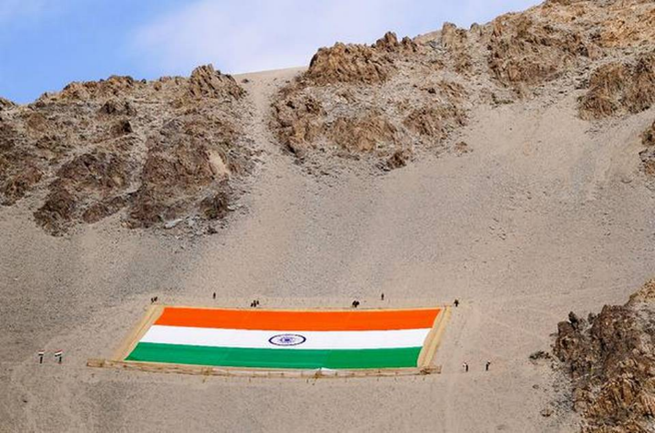
Source:
Hydrothermal Liquefaction
- Context: The National Centre for Combustion R&D (NCCRD) has been working on a technological alternative to address stubble burning via hydrothermal liquefaction (HTL).

- HTL is a thermal depolymerizationprocess that is used to convert wet biomass and other macromolecules into crude-like oil under moderate temperature and high pressure.
- In this process, the feedstock i.e. the straw and stubble mixed with water (and suitable quantities of solvents like methanol or glycerol and a catalyst like potassium hydroxide, etc) is placed in a pressure vessel.
- The slurry is then heated up to 3500C which generates steam at pressures of around 1800 in atmosphere.
- In such conditions, close to the critical state of water, the feedstock dissolves and over time (0.5-1 hour), it is converted into crude oil.
- This crude could be blended with the petroleum crude and be used in a refinery while the remaining feedstock mass gets converted into gas and char.
Sources:
Eyes in the sky
- Context: The Union government has recently cleared a project to build 6 early warning aircraft for the Indian Air Force (IAF).
- Known as the “eyes in the sky”, the Airborne Early Warning and Control (AEW&C) aircraft for the IAF is an 11,000 crore rupee project of the DRDO.

- The AEW&C aircraft can detect and track all flying objects in the sky, including incoming fighters, cruise missiles and drones, faster than ground-based radars.
- It can also act as an aerial control room for missions while also keeping track of ships out at sea.
- This will bolster IAF’s surveillance capability along the borders with China and Pakistan.
- The six aircrafts will add to the existing fleet of the IAF, which includes three Israeli Phalcon AWACS on Ilyushin-76 transport aircraft, and two indigenous ‘Netra’ AEW&C aircraft on the Embraer aircraft.
- The new aircraft will be a major upgrade on the Netra in terms of 360 degree coverage and longer range.
Sources:
DigiSaksham
- Context: Ministry of Labour and Employment with Microsoft India has launched DigiSaksham.
- DigiSaksham is a digital skills programme to enhance the employability of youth by imparting digital skills that are required in an increasingly technology driven era.
- The initiative gives priority to the job-seekers of semi urban areas belonging to disadvantaged communities, including those who have lost their jobs due to Covid-19 pandemic.

- Under this initiative, there will be three types of training:
- Digital Skills-Self paced learning
- VILT mode training (Virtual Instructor led) and
- ILT mode training (Instructor led) - in person training conducted at the Model Career Centres (MCCs) and National Career Service Centres (NCSC) for SCs/STs across the country.
- One crore active jobseekers registered on National Career Service (NCS) Portal will be able to access training in areas like Java Script, Data Visualisation, Advance Excel, Power Bi, HTML, etc and free of cost training will be provided to more than 3 lakh youths in the first year.
- DigiSaksham will be implemented in the field by Aga Khan Rural Support Programme India (AKRSP-I).
Sources:
Langa-Manganiyar
- Context: A project has been launched to save the rapidly disappearing narrative traditions of Langa-Manganiyar communities through digitization.
- The Langas and Manganiyars are hereditary communities of Muslim musicians residing mostly in western Rajasthan’s Jaisalmer and Barmer districts and in Pakistan’s Tharparkar and Sanghar districts in Sindh.
- Langa’s patrons are Muslim Sindhi Sipahis, whereas the Manganiyar’s patrons are mainly Hindus.
- The music of the two marginalized communities, who were supported by wealthy landlords and merchants before Independence, forms a vital part of Thar desert’s cultural
- It comprises of a wide range of etc. and its performances are in multiple languages and dialects including Marwari, Sindhi, Saraiki, Dhatti and Thareli.

Sources:
Reimagining food systems with lessons from India: TH
Essence: The article sets the context for sustainability in food systems with the discussion on the recently held United Nations Food Systems Summit (UNFSS) 2021, which focused on transformation of the global food system. 11 out of 17 Sustainable Development Goals are related to food systems. The themes identified during the summit such as diversification of agriculture and safety nets such as National Food Security Act have already been implemented by India during its journey from food deficient to a food surplus nation. The article has also opined about the dichotomy between Surplus and low nutrition. It has explained the relationship between equity and sustainability.
The article also expresses that climate change, unsustainable use of land and water resources, lack of nutritious diet are emerging as challenges to food systems and to deliver on the goal of hunger free world by 2030.
Why you should read this article?
- To understand the need for the United Nations Food Systems Summit and its expected outcomes.
- To understand the India’s journey for food deficient to a food surplus nation and emerging challenges.
- To know the status and reasons for malnutrition in India.
Source:
Time to measure Saubhagya’s success: BL
Essence: The article expresses the various features of the Saubhagya scheme and its level of success. The scheme has achieved its set objective of providing 24x7 quality power supplies to all. But, it is facing major challenges like lack of knowledge dissemination about the scheme and electrification, ensuring power availability to the last mile and financial anomalies. To address these challenges, the article suggests to adopt consultative approach like conducting extensive impact assessment with stakeholders to enhance policy mileage and outcome, rather than just technical and commercial audits. District Committees has been formed in this regard to conduct audits and ensure seamless functioning.
Why should you read this article?
- To get an overview of Subhagya scheme and understand challenges associated.
- To understand what possible measures should be taken to overcome these challenges.
Source:
Revealing India’s actual farmer population: IE
Essence: The article expresses that estimating exact number of farmers who genuinely depend on farming as a means of livelihood in India has important policy implications but even government reports do not agree with each other on this. Authors research points out that the actual number of farmers deriving a significant share of their income (more than 50 %) from agriculture per se is significantly less than the range quoted by various official reports. Extending farmer centric provisions to them only will help in better targeting but this will exclude a substantial number of laborers and others engaged in non-farm related works of agriculture.
The Article suggests that to avoid exclusion, Agriculture policy should not only focus on doubling farm income but also income of households who depend on activities outside farm like value addition or packaging of agricultural produce.
Why should you read this article?
- To appreciate difficulty in arriving at exact data related to a profession in India.
- To understand how any attempt at defining a profession leads to large scale exclusion and hence policy should have separate provision to promote inclusion.
Source:
Vertical Gardening: Addressing the Space
Background
- Space Constraints: With spaces becoming smaller, gardening in urban areas has started becoming difficult.
- New Technique: The concept of vertical gardening has opened new vistas for the urban population to create a garden.
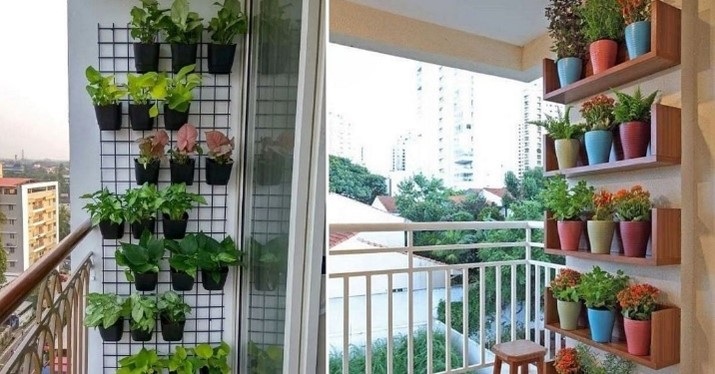
Benefits of Vertical Gardening
- The Concept: Vertical gardening works on setting up plants across vertical spaces like walls and grills.
- Improvement of air quality: Vertical gardens improve both indoor and outdoor air quality by removing harmful volatile organic compounds and absorbing pollutants.
- Disease Prevention: The Trellis climbing plants in vertical gardening slow down the spread of soilborne fungus and disease, keeping the plants much healthier.
- Hydroponic farming: This is another way to plant some greens in urban areas without much need of space, where the main tenet of the system is based on water flow.
- Hydroponic systems are set up by planting seedlings in cups filled with coco peat and compost. All nutrients are given to the plants by water and the potting mix. The system remains lightweight and easily manageable, thus eliminating the use of soil.
Quote:
Ultimately we need to recognize that while humans continue to build urban landscapes, we share these spaces with other species: David Suzuki
Source:
Share the article
Get Latest Updates on Offers, Event dates, and free Mentorship sessions.

Get in touch with our Expert Academic Counsellors 👋
FAQs
UPSC Daily Current Affairs focuses on learning current events on a daily basis. An aspirant needs to study regular and updated information about current events, news, and relevant topics that are important for UPSC aspirants. It covers national and international affairs, government policies, socio-economic issues, science and technology advancements, and more.
UPSC Daily Current Affairs provides aspirants with a concise and comprehensive overview of the latest happenings and developments across various fields. It helps aspirants stay updated with current affairs and provides them with valuable insights and analysis, which are essential for answering questions in the UPSC examinations. It enhances their knowledge, analytical skills, and ability to connect current affairs with the UPSC syllabus.
UPSC Daily Current Affairs covers a wide range of topics, including politics, economics, science and technology, environment, social issues, governance, international relations, and more. It offers news summaries, in-depth analyses, editorials, opinion pieces, and relevant study materials. It also provides practice questions and quizzes to help aspirants test their understanding of current affairs.
Edukemy's UPSC Daily Current Affairs can be accessed through:
- UPSC Daily Current Affairs can be accessed through Current Affairs tab at the top of the Main Page of Edukemy.
- Edukemy Mobile app: The Daily Current Affairs can also be access through Edukemy Mobile App.
- Social media: Follow Edukemy’s official social media accounts or pages that provide UPSC Daily Current Affairs updates, including Facebook, Twitter, or Telegram channels.


